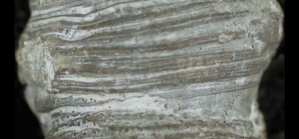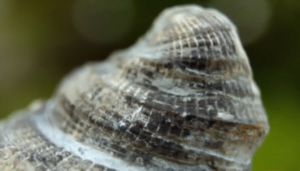Ancient Tides
The annual rings of coral

Annual Rings of Coral
Coral has lived on Earth for millions of years and it can tell us extraordinary things about our past. Encoded in coral reefs all over the world is a daily record of a very significant feature of our planet's history. Because, as it builds an external skeleton - the coral reef - it lays down a very thin layer of limestone each day, a bit like the rings on a tree but daily rather than annually. Effectively corals record how many days there are in a year. On a piece of modern coral orange bands are annual rings and in between them, virtually invisible, are 365 daily growth rings. But, if you look at a much older piece of coral, it tells a very different story. This, amazingly, is about 400 million years old. It is a piece of coral, I know it looks like an insignificant bit of rock, but, to the expert eye , this is as good as a history book. And it gives a really faithful record of what life on Earth was like, way back then.
There are rings just like the modern coral. What's really surprising, though, is that if you count those daily growth rings, you'll get a total of 410.
400 million years ago, a year lasted not 365 days but 410. So, the explanation for ancient corals like this piece to have 410 daily growth rings is that, when this was alive, a day wouldn't have lasted 24 hours but only 21. And for that to happen, the Earth had to be spinning faster.
To find out why you have to go back to the earliest days of the Earth's history. 4.5 billion years ago, the Earth was hit by another planet. Debris from the impact created the moon which would have been much closer to the Earth than it is today. It also set the Earth spinning much faster. When the first oceans formed that combination would have meant the tides would have been simply huge. Maybe hundred of metres.

Ancient Coral
But as the moon's gravity pulled on these huge tides, it acted as a kind of brake. Gradually, this slowed the Earth down. And the same process meant that the moon drifted gradually further away. As the moon got further away, its gravitational pull on the tides decreased so the tides got lower. But, even today, the rotation of the Earth is slowing down and our days are still getting longer but only by about 2.3 milliseconds every century.
